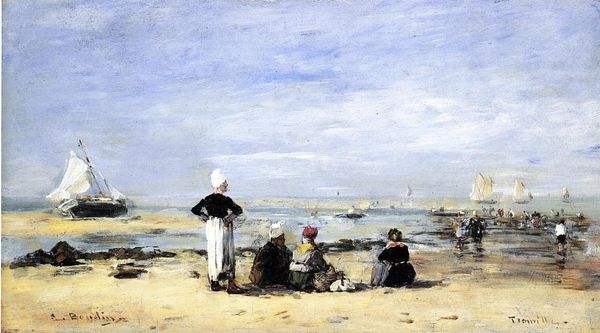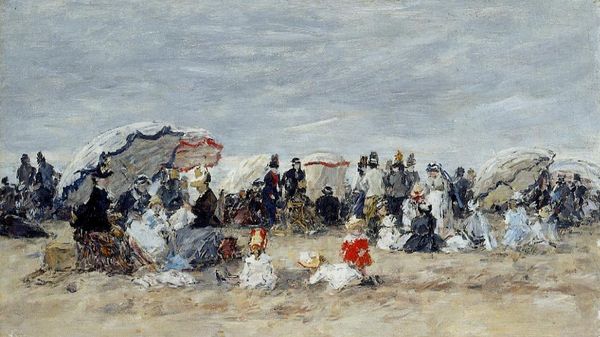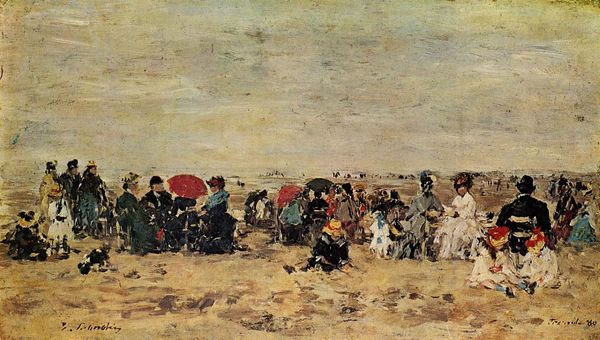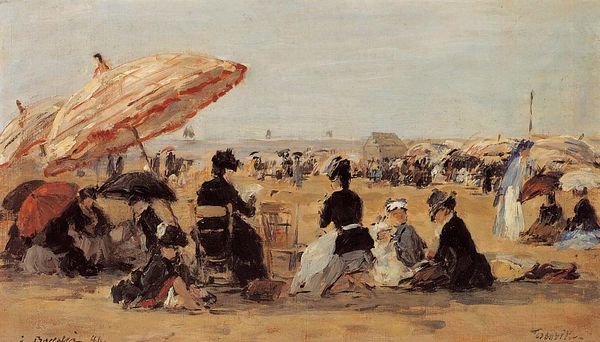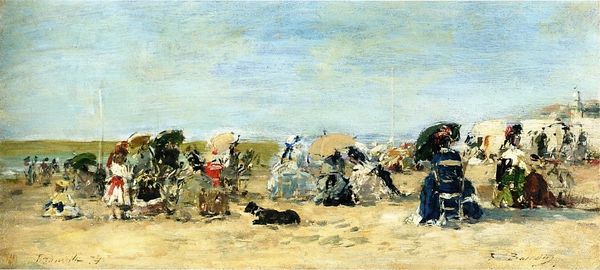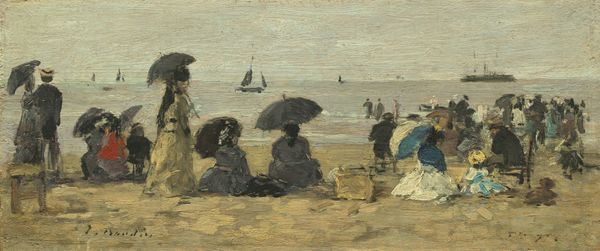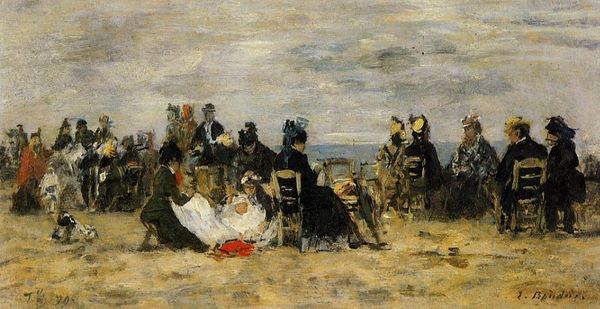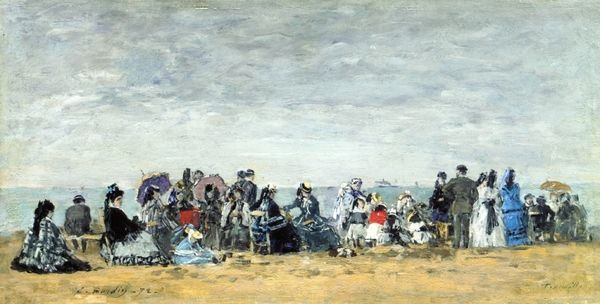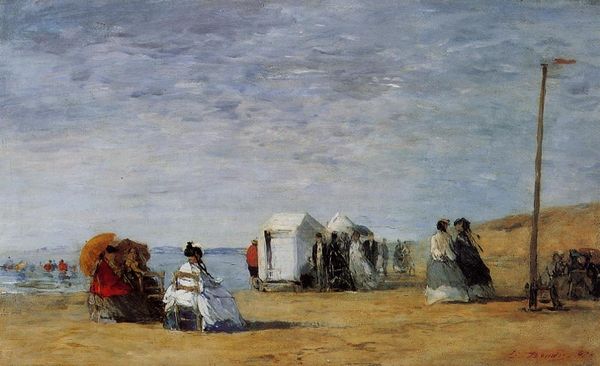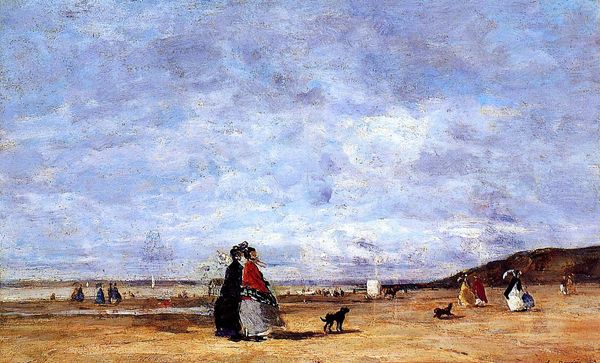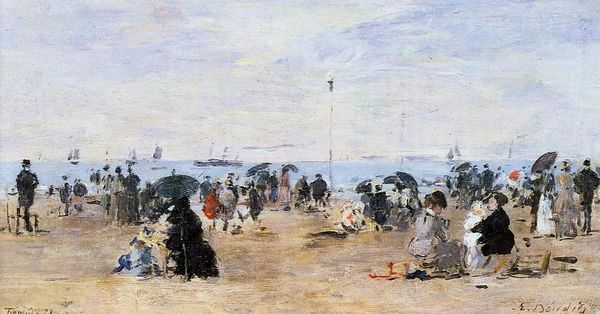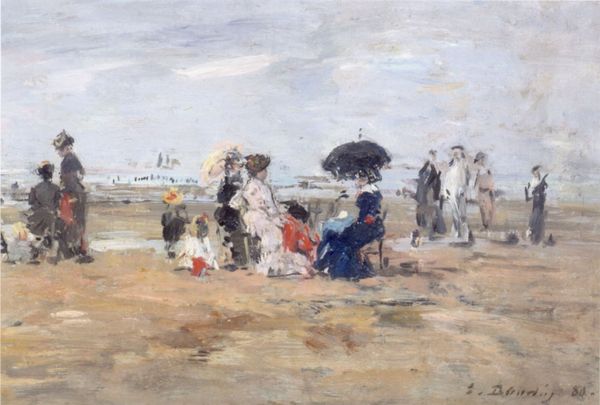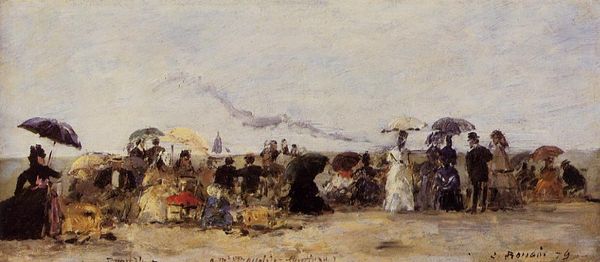
plein-air, oil-paint
#
portrait
#
gouache
#
impressionism
#
plein-air
#
oil-paint
#
landscape
#
figuration
#
oil painting
#
genre-painting
#
watercolor
Dimensions: 8.5 x 12.75 cm
Copyright: Public domain
Curator: Here we have Eugène Boudin's "Trouville, Beach Scene," painted in 1875. What’s your initial impression? Editor: Grey. I’m struck by the muted palette—the overwhelming sense of greyness. It evokes a particular feeling… maybe a melancholy associated with fleeting summer days. Curator: Absolutely. Boudin was working "en plein air," directly observing and capturing the atmospheric conditions. Note the visible brushstrokes; the canvas texture remains apparent. He’s not trying to create a hyper-realistic scene, is he? More interested in conveying the sensory experience. Think about the availability of ready-mixed paints and portable easels enabling artists to capture these fleeting moments outdoors. Editor: And the location itself, Trouville, became a fashionable resort during the Second Empire. The beach became a stage, and these fashionable figures strolling along became performers. Boudin's paintings of these scenes document the evolving leisure class and the development of coastal tourism. Curator: The materiality reinforces that point. Oil paint, allowing for layers and adjustments…gouache offering luminosity and quick drying times. How did Boudin balance capturing the ephemerality of the scene with the more considered qualities of oil and gouache? It is as much about recording a place, as about recording changing leisure practices. Editor: He used the impressionistic technique as a commentary on bourgeois society's desire for spectacle and display. The figures, rendered with quick, almost careless strokes, aren't specific individuals but types embodying the fashion and social aspirations of the time. The artwork embodies the transformation of social spaces and pastimes in that era. Curator: Note the sharp contrast between the almost sculptural treatment of the women in the foreground, compared with the sketchy renderings of the groups toward the horizon. Consider that choice in relation to social class - and consumption on the beach. Editor: This piece invites us to consider art as a historical record of social change, wouldn’t you agree? It freezes a moment in time reflecting a bigger picture of socio-economic transformation. Curator: Yes, and also, importantly, the shifting technologies that made this kind of representation of daily life and modern leisure newly possible, in its turn prompting more questions. Editor: Absolutely. Food for thought, I’d say.
Comments
No comments
Be the first to comment and join the conversation on the ultimate creative platform.

